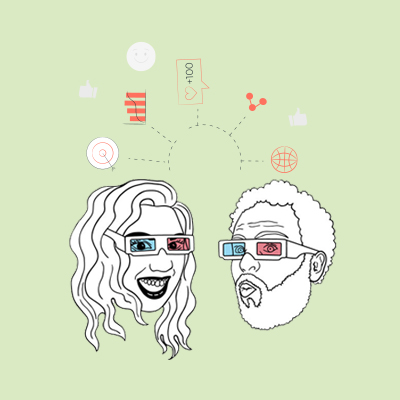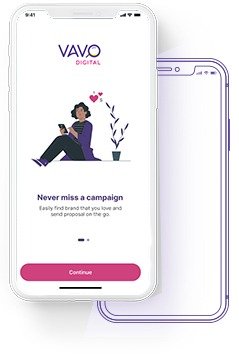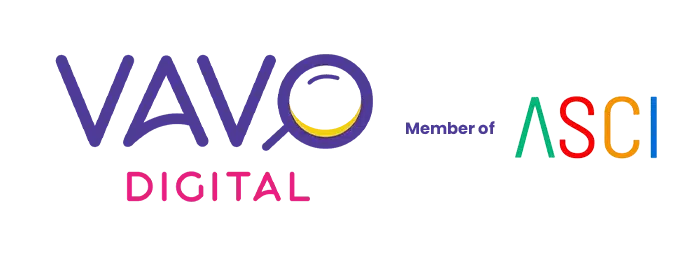
The great advertising shift: How we went from “You should see this!” to “How have you not seen this?!”
There was a time when marketing and advertising pros walked into meetings and discussed various avenues of making their products known; conversations mostly comprising channels such as television, radio, print, direct mail, and sponsorships. Then came the wonderful world of the “World Wide Web”, that brought in a monumental change and forever altered the way we sell things and react to what’s being sold to us.
Ever since its inception that dates back to steel carvings made by the ancient Egyptians, advertising and marketing have gone through numerous ebbs and flows. From the printing press in the early 1400s to the radio and billboard era, from the emergence of TVs and desktops all the way to phones that fit the palms of millions, this journey has influenced us in ways we never expected. It has resulted in both an information excess and a shortage of attention span at the same time.
As we sit back and enjoy this ride, the main question that we need to ask ourselves is: Are we paying enough attention?
Then: Traditional advertising and the era of 30-second wins
Let’s take things back to the pre-internet days and revisit some famous milestones. The days when advertising was carried out via traditional media: infomercials on radio through catchy jingles, 30-second glimpses between sitcoms on fuzzy old televisions, celebrity endorsements during important events, and flashy signs on billboards.
It almost felt like the golden era, when the entire movement transcended screens and physical spaces to become a huge part of our society – almost taking on a cultural status. And despite external turmoil, advertisements became a staunch part of everyday life, as more people began to loosen their purse strings and aspire for higher standards of living.
I’m sure all of us still fondly look forward to Amul’s witty cartoons even today, can definitely sing the Nirma and the Complan songs without forgetting any of the words, and remember the adorable Zoo Zoo from Vodafone. These are just a few testimonials that go a long way in proving just how impactful these ads have been and still continue to be.
Credit: The Economic Times
Characters were built around products (such as the Air India mascot) to foster a sense of relatability between brands and its consumers. Famous faces were brought in to sell a range of things from diapers and washing machines all the way to clothes and cigarettes. While these additions played a major part in creating a distinctive culture, products were still the star of the show. Even though there were multiple choices, everything and everyone was armed with only one purpose: to sell.
Now: An ever evolving landscape that is always connected
Life after traditional advertising began with the introduction of the internet in late 90’s and early 2000’s and opened up many new channels. It wasn’t long before e-mail marketing blew up and gradually gave way to websites, e-commerce opportunities and the dot com blast.
Simultaneously, the monolithic TV networks also splintered into hoards of cable channels and niche magazines became the talk of the town. As new forums courtesy the internet became easier to access and target specific media with, print and broadcasting with higher expenditures began losing ground.
Given this fragmentation, it wasn’t a surprise that brands started tearing away their focus from the 30 second commercials and started innovating to captivate global audiences.
When smartphones were introduced, it brought with it yet another revolution – an advertiser’s dream where the audiences were constantly connected and available. This phenomenon also took place at a very opportune time – neatly placed between the rise of social media channels and the GPS tracking technology that gave access to a LOT more consumer data.
This digital wave opened up a whole new advertising world filled with Myspace and Orkut, followed by Facebook, Twitter, Instagram, Vine, Tiktok, Snapchat – you name it.
Advertisers’ jobs became simultaneously easier and more difficult and the era of price markups and old methods was coming to a close. While the metaphorical golden goose laid a lot of eggs, it also asked for a lot more responsibility and accountability. There was a need to ensure that the right message was reaching the right place at the right time through the correct channels and keep up with the digital revolution.
A shift from passive consumer patterns to active
Just as advertisers felt that they had gotten the grip of the new avenues available to them, an unexpected situation cropped up. Millennials were the demographic of the moment, but they were becoming more picky about what they decide to consume. Most also actively chose not to sit through commercials or be bombarded with ads while they browse the internet.
The information was also always on the excess, bringing up the need to get real-life reviews without the masks of an ad. Ads weren’t considered trustworthy anymore and malwares, frauds and other unethical marketing tactics were also becoming common, making everyone wary of advertisers.
Products no longer the pièce de résistance, UGC on the rise
This uncertainty and dishonesty cast a shadow over digital advertising as flagrant attention-getting also started becoming pointless. This led everyone to probe into another aspect: Who can you trust?
Opportunities such as geotargeting and retargeted ads were then utilised to focus on only the relevant audiences with relatable content, genuine messaging and transparency. In a bid to reestablish trust and get consumers on their side, brands started partnering up with the people they want to purchase from them. This gave birth to influencer marketing as we know it today.
By voicing out their propositions through a friend like you would in real life, brands now focus on offering small touches that fit naturally into people’s everyday life. Most of the conversations today strive to include consumers as a part of the advertising, rather than just being an outsider peeking in.
Influencer marketing is the next big thing

Credit: Pexel
Businesses have been using celebrities and iconic figures to promote their products and foster relatability. But as more and more brands realise just how much people trust other people’s opinions over everything else, a new pool of influencers has opened up.
A hybrid of old and new marketing and advertising tools, influencer marketing is everything that a modern day campaign needs to be. It’s less about selling your wares directly and more about becoming one with the offering; an almost verb of sorts like “Let’s xerox it” or “Let’s Swiggy it”.
More “everyday” people are growing commendable followings on social media. What truly makes them influential is their expertise within a particular industry and the ability to go above and beyond to deliver something unique. They not only make the most engaging social posts on their specialist topics, but also help brands reach a wider yet specific set of audiences. It’s no longer a case of picking the most popular celebrity of the moment but employing anyone with an influence to best promote the product or service.
As the industry refocuses on creating communities, building brand awareness and showcasing how the product can elevate one’s life, VAVODigital is one such new-age influencer marketing agency that aims to unravel the power of citizen influencers. With 20+ categories of Nano and Micro Influencers across 10+ social networking platforms in India, automated payments and streamlined processes to declutter the influencer marketplace, VAVODigital aims to help brands amplify their voice irrespective of budget limitations.
As the world continues to progress and audiences become smarter everyday, it’s obvious that now is as good a time as any to unwield the true potential influencer marketing has to offer. The question here is: What would you as a reader prefer to see the influencers and the brands leveraging their influence to do?





